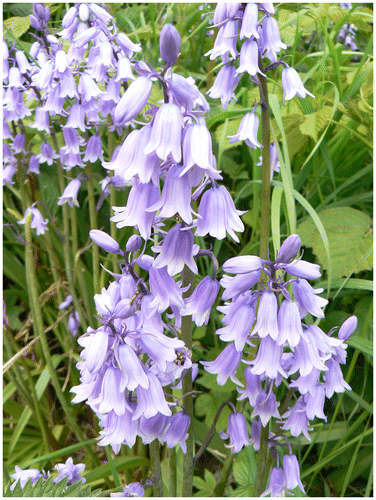The inexorable growth of towns and cities places great strain and pressure on urban tree populations – the “urban forest”. Arguably, it is in the urban catchment that trees delivered the greatest benefits and “services” to local people, but also are under the greatest stresses. Urban or urbanised environments exhibit many characteristics that make life difficult and problematic for big trees, and yet it is the larger trees that bring the greatest contributions to quality of life, to landscapes, to human health, to floodwater mitigation, to climate-change adaptation, to house values and the desire to live in a particular locale, to biodiversity, and to heritage or “sense of place”. Furthermore, with urban environmental pressures and stresses, ecosystems flux and change under a burden of climate-change, of nutrient fallout, of new invasive species (including diseases and pests), and both human-induced disturbance on the one hand, and the ending of long-term management on the other. This situation provides a background context to a selection of research papers on urban trees, urban forests and urban landscapes.
Volume 39 of the Arboricultural Journal closes with Part 4 bringing you three major papers on a diversity of topics. Evolving ecologies in urban woods and urban forests provide fascinating insights into future trends with changing climate and other environmental parameters. Urban forests are under pressure from introduced and invasive non-native spices, from nutrient enrichment, from fragmentation, from “cultural severance” (e.g. Rotherham, Citation2013), and abandonment of traditional management practices, and from increasing levels of “macro-disturbance” (see for example, Rotherham, Citation2014). Dresner, Van Winkle, and Copp (Citation2017) present the findings of a major study in North America to consider how tree composition and abundance pattern vary between watersheds in an urban, north-west Pacific forest. Comparative analysis of vegetation plots in areas of urban forest, and in a rural watershed, suggest successional changes proceeding to a novel condition in the former. In view of increasing global urbanisation, this trend is likely to be happening in urban forests around the world. The increasing tendency for ecological systems to generate new “recombinant” or “novel” ecologies is the subject of a recent research book (Rotherham, Citation2017), and this provides a current context to this study (see Figures and ).
Figure 1. The hybrid or so-called “Spanish Bluebell” is increasingly a component of recombinant urban forest vegetation (Image © Ian D. Rotherham).

Figure 2. Himalayan balsam is typical exotic, invasive species in recombinant urban forests in Britain (Image © Ian D. Rotherham).

With increasing urban development and environmental law and protection regarded by some political persuasions as “unnecessary red tape”, local authorities with reducing resources, (see Rotherham, Citation2015), struggle to deliver core services such as tree protection. Furthermore, the designation, management and administration or enforcement of Tree Preservation Orders (TPOs), are increasingly contentious. In this circumstance, we welcome the paper by Wright and Slater (Citation2017) which discusses the findings of research into how photographic records are used in relation to Tree Preservation Orders. Based on a case study of London Boroughs, the authors consider issues of justification of designations, of management, and of enforcement. None of the authorities investigated had any formal system for maintaining photographic records. Wright and Slater conclude that current pressures on local authority resources are major obstacles to the capture of such photographic archives of protected trees. Additionally, they comment on the need and opportunities for improvement. In these days of digital imagery and of on-line “street-view” style resources, it would seem that there is considerable scope to support the TPO process through effective photographic records.
With expanding urban centres, trees are often both needed in areas where tree cover is low, but also under pressure where they do occur in towns and cities. This is a dilemma considered by Ow and Ghosh (Citation2017) in a detailed study of tree performance when grown either in containers or directly in the ground. The authors examined differences in morphological and physiological attributes of container-grown and in-container grown trees.
The growth data suggest that container-grown trees tended to allocate more carbon to leaves, stems and branches, whereas in-ground trees put carbon into leaves and roots. Understanding the processes and differences in these situations may have implications for urban tree managers. In new-build landscapes, the potential for growing trees in containers may be a desirable alternative to in-ground planting. This approach might also provide urban municipalities with the option to save and relocate trees when faced by losses to new and on-going developments. Whilst the delivery of such a concept might be difficult and expensive in practice, translocation of container-trees to new sites might help solve some problems. The authors indicate that this might enable cities to work towards the development of a sustainable population of medium to large urban trees even when development pressure might make this difficult.
With on-going urbanisation across the globe, the issues raised here will continue to grow in importance and in significance. The editor would welcome further contributions on associated themes and topics.
[email protected]
References
- Dresner, M., Van Winkle, J., & Copp, S. (2017). Tree composition and abundance pattern differ in two watersheds of Forest Park, a large Pacific Northwest urban forest. Arboricultural Journal, 39(4), 207–224.
- Ow, L. F., & Ghosh, S. (2017). Comparing the morphology and physiology of trees planted in containers and in-ground sites. Arboricultural Journal, 39(4), 197–206.
- Rotherham, I. D. (ed.). (2013). Cultural Severance and the Environment: The Ending of Traditional and Customary Practice on Commons and Landscapes Managed in Common. Dordrecht: Springer.
- Rotherham, I. D. (2014). Eco-History: A Short History of Conservation and Biodiversity. Cambridge: The White Horse Press.
- Rotherham, I. D. (2015). The Rise and Fall of Countryside Management. London: Routledge.
- Rotherham, I. D. (2017). Recombinant Ecology – a hybrid future? Dordrecht: Springer Briefs, Springer.10.1007/978-3-319-49797-6
- Wright, M., & Slater, D. (2017). Attitudes and approaches in London boroughs to the use of photographic records in the justification, management and enforcement of Tree Preservation Orders. Arboricultural Journal, 39(4), 225–244.
